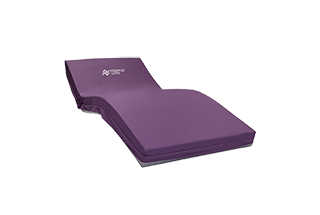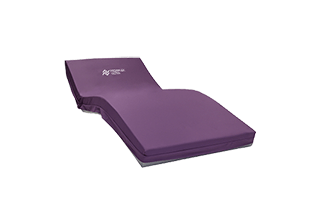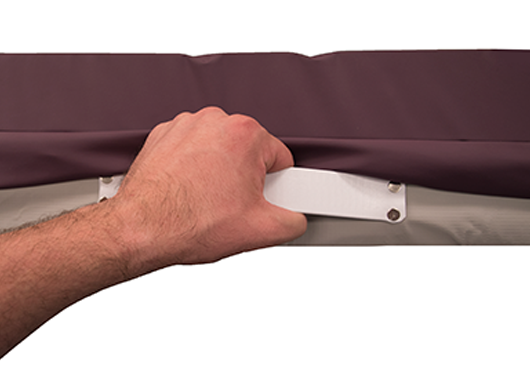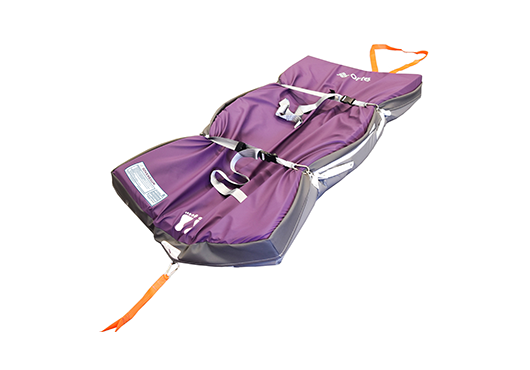Icon I35 Acute Care 200kg
Icon I35 4-Layered Medium Care Pressure Care Mattress
The Icon I35 Series builds upon the proven performance of the Icon I34 and offers increased weight capacity and an integrated sloped heel region for additional pressure redistribution. This mattress line has an Minimum Order Quantity (MOQ) of 10+.
The four layered configuration of the Icon I35 mattress offers increased therapeutic function for with additional weight capacity for clients up to 200kg, providing the best level of support and comfort without any ‘bottoming out’. A favourite for aged care and hospital facilities, The Icon I35 mattress provides true leadership in static pressure care, longevity and support in an acute preventative setting, suited to patients up to medium risk.
Features

AIROFORM MEMORY BREATHE IMMERSION INTERFACE LAYER
- High Temperature Stability to deliver consistent immersion, performance and comfort
- Maximises Patient contact with Support Surfaces Providing Pressure
- Redistribution
- Alleviates localised pressure points
- Depth calibrated to maximise functionality and patient mobility
- Unique Airoform Breathe ventilation system minimises heat entrapment and enhances core circulation providing a cooler sleep surface
- Visco-elastic/Memory Foam cell structure provides low-shear surface
- Firmness: Soft

4-LAYERED, GRADED PRESSURE REDISTRIBUTING CORE
- High specification foam for longevity and performance
- Provides graded postural support and patient comfort
- Anti-microbial treatment applied to foam maximises longevity and core
- micro-climate
- Excellent core stability to encourage centralised patient positioning to
- minimise falls risk, entrapment and enhance pressure care

PREMIUM FIRM FOUNDATION LAYER
- Provides protection against ‘bottoming-out’ during transfer,
- repositioning and whilst in the inclined/fowler position
- Provides exceptional comfort, support for repositioning and
- patient care
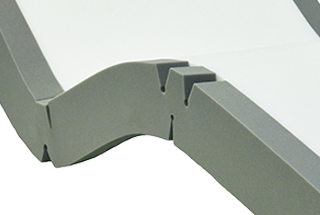
HINGED STRENGTHENED SIDES
- Increase lateral stability of support surface
- Improves patient safety and encourages central patient positioning
- Make patient transfers easier
- Unique hinge profile reduces foam fatigue and allow mattress to easily
- conform to varied bed positions
- Enables ease of primary patient care
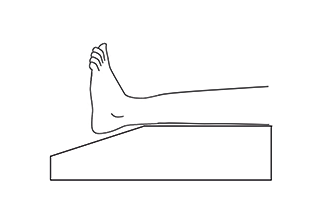
SLOPED HEEL PRESSURE TRANSFER ZONE
- Enhances pressure redistribution & protection for critical at-risk heel region
- Offloads pressure from the patients heels and transfers it to calf area
- Unobtrusive, does not require any adjustment
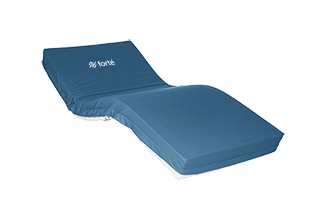
ADVANTIFLEX CLASSIC PRESSURE CARE COVER
- Advantiflex PU1100 Pressure Care Polyurethane Upper Material: 4-Way Stretch, Vapour Permeable, Blue
- Heavy Duty PVC Base Material: Durable, 100% Waterproof, Grey
- Infection Control & Compliance: Inherent Anti-Microbial Protection, Fire retardant, High frequency sealed and welded seams
- Construction: Two-sided / 180° high frequency welded zipper, Zipper waterfall protection flap, High frequency sealed and welded seams
About the Icon I35
4-Layered Medium Care Pressure Care Mattress
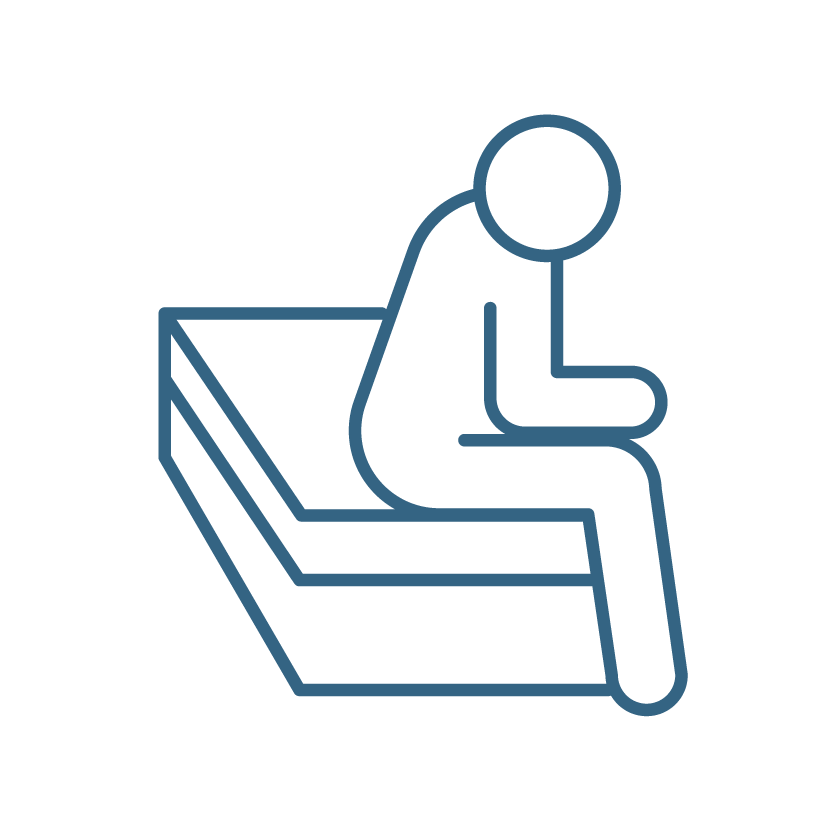
Firm Strengthened Sides
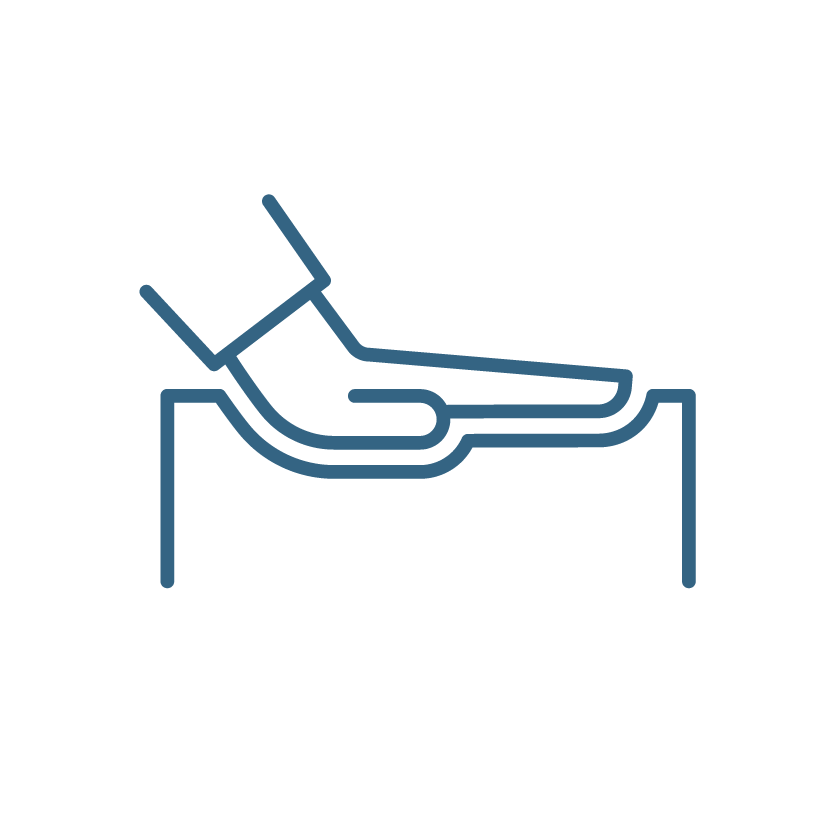
Airoform Immersion Foam
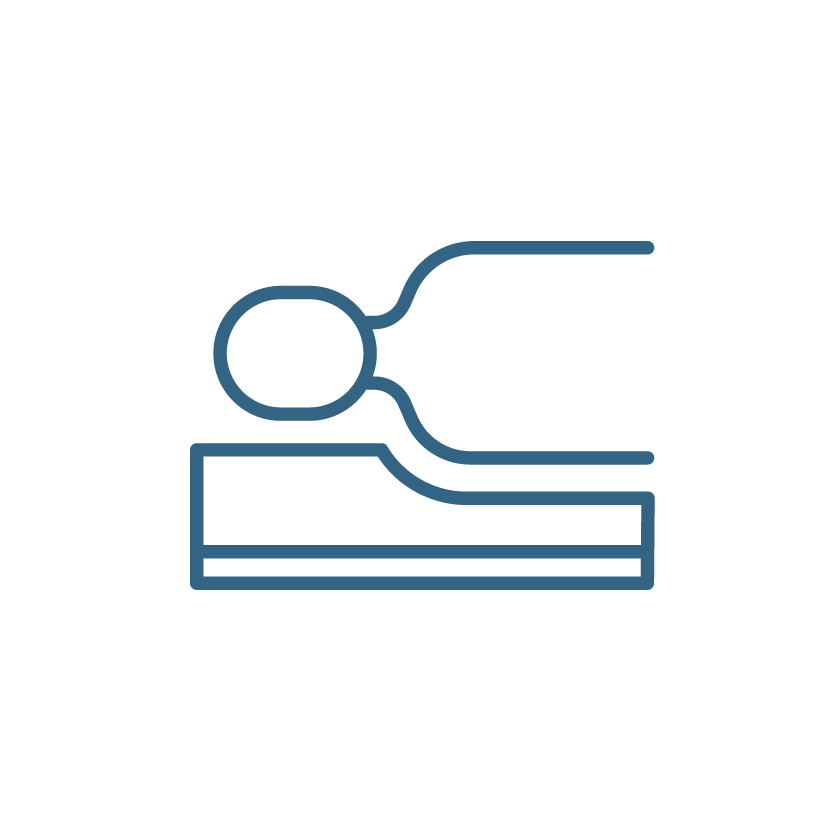
Anatomical Support

Hospital Grade Technology
SLOPED HEEL REGION
The heels are one of the most susceptible sites for pressure injuries, due to factors such as heel anatomy, disease burden, comorbid conditions, and the aging process. Heel Pressure Injuries (HPI) have been found to be one of the most prevalent sites for pressure injuries to occur, with a study in Europe identifying that 38.5% of stage IV pressure injuries were found at the heels. Pressure upon the Calcaneus can be reduced and redistributed by elevating the lower leg and calf 2. There are three primary designs of heel elevation discussed in this article: the Heel Slope (Surface Modification), Heel elevator (external device) and the elevated Heel slope (Hybrid Model).
Though essential in the clinical setting, and particularly with those that are medically complex, elevating the heel and redistributing the pressure towards the calf is a difficult task. There are several implementation considerations such as ensuring the knee is at a slight flexion (5-10°) while the heel is elevated can help avoid vein compression and increased risk of deep vein thrombosis (DVT), adapting a plan of care to the individuals’ needs and avoiding causing harm to other ‘at-risk’ areas of the body (such as the Achilles tendon).
With patients on a traditional support surface with a completely horizontal fascia (no heel slope) and no additional aid from an external heel device, pressure injuries upon the heel region are more common than with heels that have elevated heels, with differences being from an 8% to 54.2% incidence on heel injury respectively.
Forté has conducted studies to illustrate the basic principles of heel offloading using a Tekscan Pressure Measurement System which utilises a thin and flexible sensor. We use this system to measure the pressure distribution of a human body on the surface of our mattresses with minimal interference.
The image demonstrates the pressure distribution of the NPIAP/RESNA 50th Percentile male mannequin (81.2kg, 1775mm tall) over a 6-hour period, shown in a variety of heel positions. The Support surface used is a Single Sovereign S3 High-Care Mattress.
Such a decrease in pressure, therefore, signifies the importance of heel offloading, and indirectly the importance of utilising a support surface modified with a heel slope as a means of offloading such pressure and reducing risk of an HPI. Furthermore, the heel slope was identified to encourage a slight bend in the knee of approximately 8-10°, in comparison to a flat surface which evidence has suggested reduces popliteal vein compression.
MEDICAL FOAM TECHNOLGY
Foams used by Forté in the Icon I35 mattress are specifically formulated for use within high humidity applications, typical within Hospital applications where the mattress has low rest periods and is fitted with Moisture Vapour Permeable Covers. ‘Humidity’ treatment ensures that the structural integrity of the foams remains within conditions that would otherwise have a significant degrading effect on foam performance. It also ensures postural support is maintained for comfort and prevents excessive pressure forces because of foam collapse. It is crucial to pressure injury prevention that the foam maintains its support to prevent a ‘bottoming out’ effect and ensure immersion and envelopment.
Foams are also treated with Eversheild Anti-Microbial protection to prevent the growth of mould and bacteria. Maintaining healthy conditions within the foams reduces risk of infection control, cross patient contamination and mould.
Foams are individually sourced and selected as raw materials by Forté Healthcare from verified manufacturers within Australia, Europe and United States for guaranteed compliance with International standards. Forté provides complete supply chain transparency, benefiting the user by ensuring ultimate governance on quality and raw material safety especially necessary as Medical Mattresses are used in very close physical proximity to vulnerable users.

THERAPEUTIC OR SAFE WEIGHT RANGE
With an increased therapeutic weight capacity of up to 200kg the Icon I35 is used as an upgrade mattress to the Icon I34, especially in facilities, as it suits a wider variety of individuals.
What is the difference between a therapeutic weight range (TWR) and a safe weight range (SWR)?
Therapeutic Weight Range (TWR) refers to the weight range in which the mattress performs to a clinically effective level. TWR is especially important for static foam mattresses as they have a defined limit whereby the foam properties fail and over compress. At this point, the support surface is not providing therapeutic function and should not be used.
The Safe Weight Range (often referred to as Safe Working Load) is defined as the maximum and minimum permissible load that can be safely supported by the mattress. SWR is usually broader than the TWR.
To get the most out of your mattress from both a clinical and longevity aspect, it is best to follow the therapeutic weight range.
When prescribing or selecting a mattress it is very important to consider the weight of the individual currently and the expected weight in the future. For example, if your 34kg client with a degenerative condition requires a Zephair (TWR 30-180kg), it would be recommended to go with the Lightweight Zephair configuration (TWR 12-90kg).

WHAT DOES MEDIUM RISK MEAN?
‘Risk’ relates to the likelihood of developing a pressure injury. You can determine the risk of your client but conducting a risk assessment – using a risk assessment tool such as the Waterlow along with qualified clinical judgment and knowledge of the client’s history and underlying condition.
On the Waterlow Risk Assessment Tool, typically clients who score up to 15 are suitable for one of the mattresses within the Medium Care Medical Mattress range.

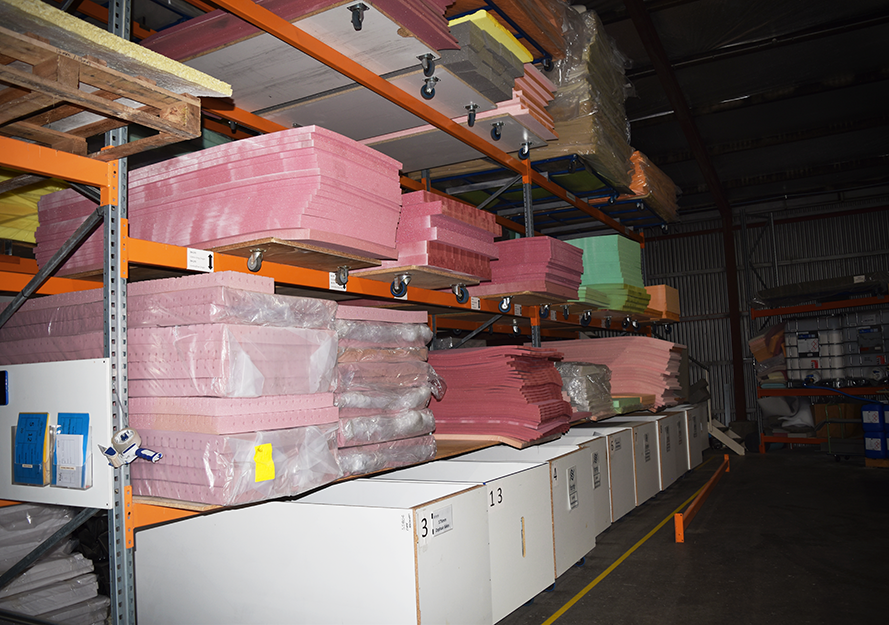

Hear what Health Professionals say About Forté Healthcare Mattresses…

You’re Covered by Forté Healthcare’s ‘Successful Solution Guarantee’
At Forté Healthcare, we are so confident in the care and performance our support surfaces deliver, that we back our products and expertise with our ‘Successful Solution Guarantee’.
Here’s how it works:
Our team of specialists will help you navigate our product range to correctly match our support surfaces with your care environment and patient risk profile. This ensures you achieve the highest levels of patient care and pressure injury prevention.
If, for whatever reason the product we recommend isn’t helping you achieve the outcome you expected, we’ll work with you until it is. And in the unlikely event we still cannot provide the right solution.
We’ll refund you 100% of the charges to date.

